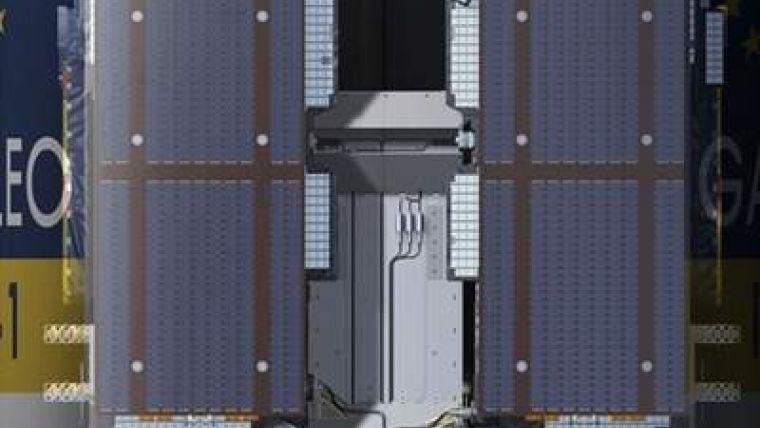Galileo IoV Satellites Await Launch
The twin Galileo satellites have been attached to the supporting dispenser that will hold them in place during their 20th October 2011 launch atop the first Soyuz from French Guiana. The first Galileo In-Orbit Validation satellite, also known as ‘PFM', was attached to one side of the dispenser on Tuesday 4th October, with the second flight model, ‘FM2', joining it on the other side the following day.
The procedure took place in the S5B fuelling facility, where both satellites' tanks had been filled with twelve years' worth of propellant the previous week. The Galileo launch dispenser, designed for Arianespace by RUAG Space Sweden, secures the satellites in place during the take-off of their Soyuz ST-B. The satellites remain attached to the dispenser for a total of four hours after launch. Then, when the three-stage Soyuz ST-B's additional Fregat MT upper stage reaches the planned 23,222 km orbit, the dispenser fires a pyrotechnic separation system to release them in opposing directions.
The first two Galileo IOV satellites will be followed next year by two more. This quartet of satellites, built by a consortium led by EADS Astrium Germany, will form the operational nucleus of the full Galileo satnav constellation. They combine the best atomic clock ever flown for navigation - accurate to one second in three million years - with a powerful transmitter to broadcast precise navigation signals.

Value staying current with hydrography?
Stay on the map with our expertly curated newsletters.
We provide educational insights, industry updates, and inspiring stories from the world of hydrography to help you learn, grow, and navigate your field with confidence. Don't miss out - subscribe today and ensure you're always informed, educated, and inspired by the latest in hydrographic technology and research.
Choose your newsletter(s)
























